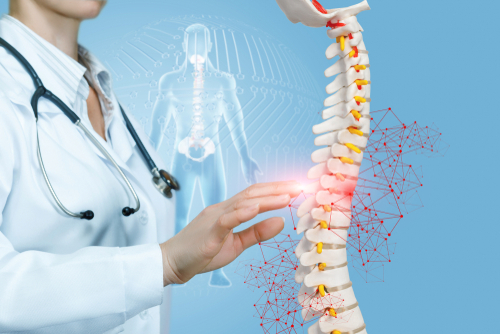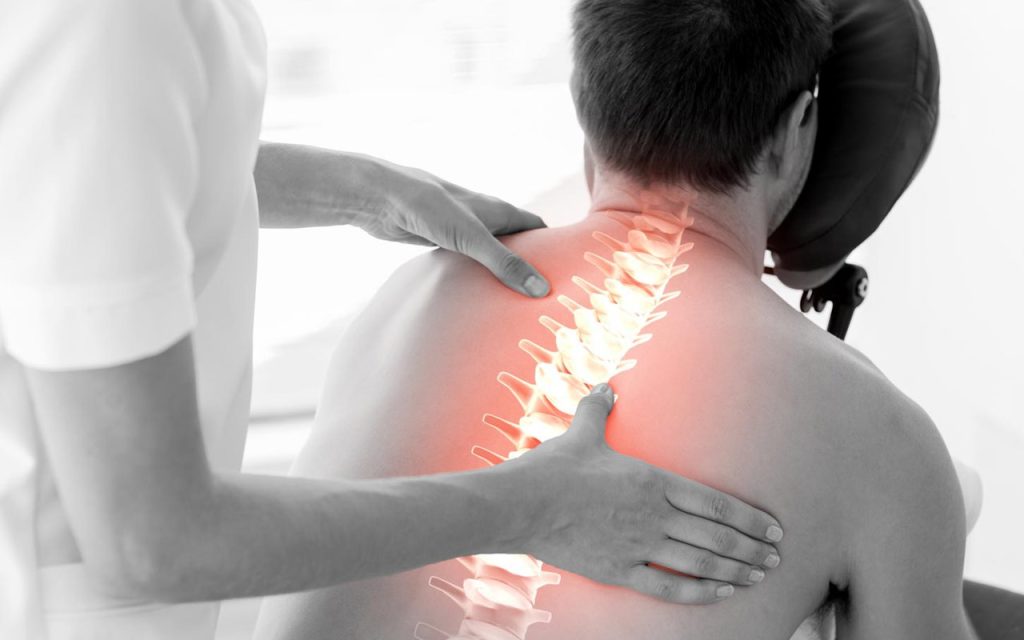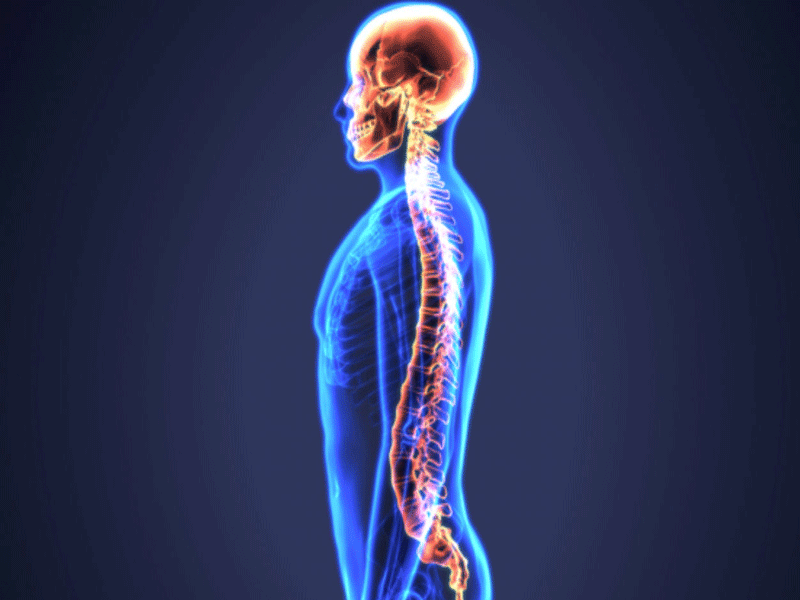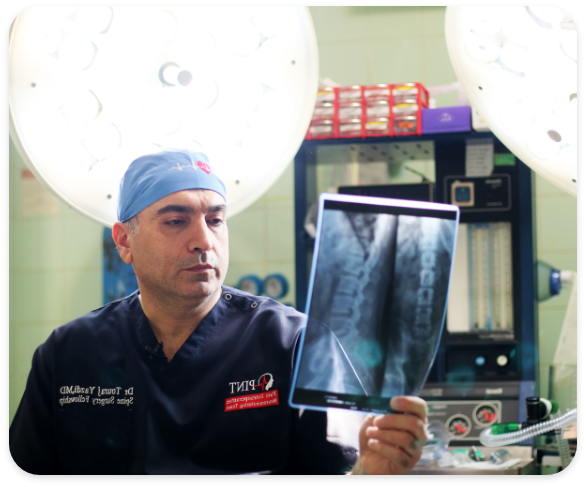The spine is one of the most vital parts of our body that supports the body and allows the body to move in different directions. The anatomy of the spine is amazingly created and its structure has many functions. All components of the spine and vertebrae are designed to protect the spinal cord. The spinal cord is a very sensitive organ that passes through complex structures of muscles, ligaments, and bones in the lower back, enabling communication between the brain and other parts of the body and the transmission of sensory and motor messages.
The anatomy of an adult’s spine is normally placed on the pelvis in such a way that the least amount of pressure is applied to the pelvis, and on the other hand, the back muscles need the least possible force to keep the spine straight. Loss of balance in the spine can cause double pressure on the muscles in the spine and eventually deformity (deformity) of the spine. When the spine is damaged and its function is impaired, the consequences can be very painful or debilitating.
The spine has 33 separate vertebrae at birth. But in adulthood, we usually have 24 separate vertebrae, because some sacral vertebrae fuse.
The 7 vertebrae that are located in the neck are the cervical vertebrae known as C1 to C7. The cervical vertebrae are responsible for making neck movements possible. These vertebrae also protect the spinal cord, nerves, and arteries that travel to other parts of the body.
The 12 lumbar vertebrae behind the cervical vertebrae are the thoracic or thoracic vertebrae, known as T1 to T12.
The lower back or lumbar region has 5 vertebrae known as L1 to L5. The lumbar region carries the most weight compared to other areas in the spine, and therefore this area is most prone to injury and difficulty and is the source of low back pain.
The sacrum and coccyx are made up of 9 vertebrae, all of which fuse to form a single bony body.

Spinal curves
When you look at the spine from the front or the back, the curvature is straight and all the vertebrae are placed directly on top of each other without deviating left or right. If the spine is curved to the left or right, the person has scoliosis or a complication of spinal deviation.
But if you look at the spine from the side, you will see that the spine has three natural arcs or curvatures:
The cervical region of the spine has a hollow or arch inward.
The thoracic region of the spine has a bulge or arch outward.
The lumbar or lumbar region of the spine also has an internal depression or curvature.
The presence of these curves helps the spine to bear the weight of the head and upper body well and to maintain the balance of the body while standing and sitting. Of course, having too much curvature (such as excessive lumbar or humpback) can cause an imbalance in the spine and other problems.
Spine components
The various components of the spine are designed to protect the spinal cord, support body weight, and enable various upper body movements.
Vertebrae
The vertebrae in the spine can withstand the greatest weight and pressure on the spine. The trunk of the vertebrae is attached to a bony ring, which also has appendages. There is a bony protrusion on either side of each vertebra called the pedicle, and these protrusions protect the bony ring that surrounds the spinal cord. There is also a bony blade (laminae) behind each of the vertebral rings. On either side of the spine are transverse muscles that attach to the spine. The lamina blade has a sharp point called the spinous process. This thorny appendage is felt in the form of small bumps on the back of the neck and waist by hand.
Intervertebral discs
Between the two vertebrae of the spine is a disc whose function is to absorb the pressure applied to the spine. The discs are shaped so that they can absorb pressure well and also allow the nuts to move on top of each other and in different directions. Each intervertebral disc has a very strong tissue shell called the annulus fibrous, which contains a soft substance called nucleus pulpous. The strong outer layer (annulus) protects the soft inner material (nucleus) of the disc and has strong tissues that attach to the vertebrae on either side of the disc. The nucleus material is abundant in water and has a soft state, which makes the discs soft and able to absorb the pressures applied.
Facet Joints
Facet joints connect the arched part on either side of each adjacent nut. There are two facet joints between the two adjacent vertebrae, each on one side (left and right) of the vertebra. The facet joints connect each nut to its upper and lower vertebrae, and their job is to allow the vertebrae to rotate independently of each other.
Nerves
Nerves in the lower back come together to form the sciatic nerve, which runs down the back of the leg. A “pinched nerve” from a herniated disc can cause pain down the back of the leg sometimes referred to as “sciatica”.
Spine muscles
Many parts of the body and even the limbs move, and they also depend on the spine. The group that directly covers the spine has a very important role in maintaining the correct position of the body (back and neck) and bearing the weight of the body by the spine during daily activities, work, and exercise. It is estimated that most back pain is caused by soft tissue injury such as muscle strain. Our back muscles allow us to stand straight and lift things. In a normal situation, the back muscles contract and relax as the back moves. But under strain, the poorly conditioned muscle can spasm, tensing up until it becomes a hard painful knot.

Spinal diseases
Because the spine has a very complex structure and is the motor center of our body, which is involved in most activities and tasks, it is prone to many injuries and problems, including:
- Osteoporosis
- Spinal canal stenosis
- Disk protrusion
- Spinal cord injury
- Scoliosis or spinal deformity
- Hump of the waist and back
- Excessive waist
- Spondylitis
- Rheumatoid arthritis
- Osteoarthritis of the spine
Sources
https://www.spineuniverse.com/anatomy
https://mayfieldclinic.com/pe-anatspine.htm
https://my.clevelandclinic.org/health/articles/10040-spine-structure-and-function


